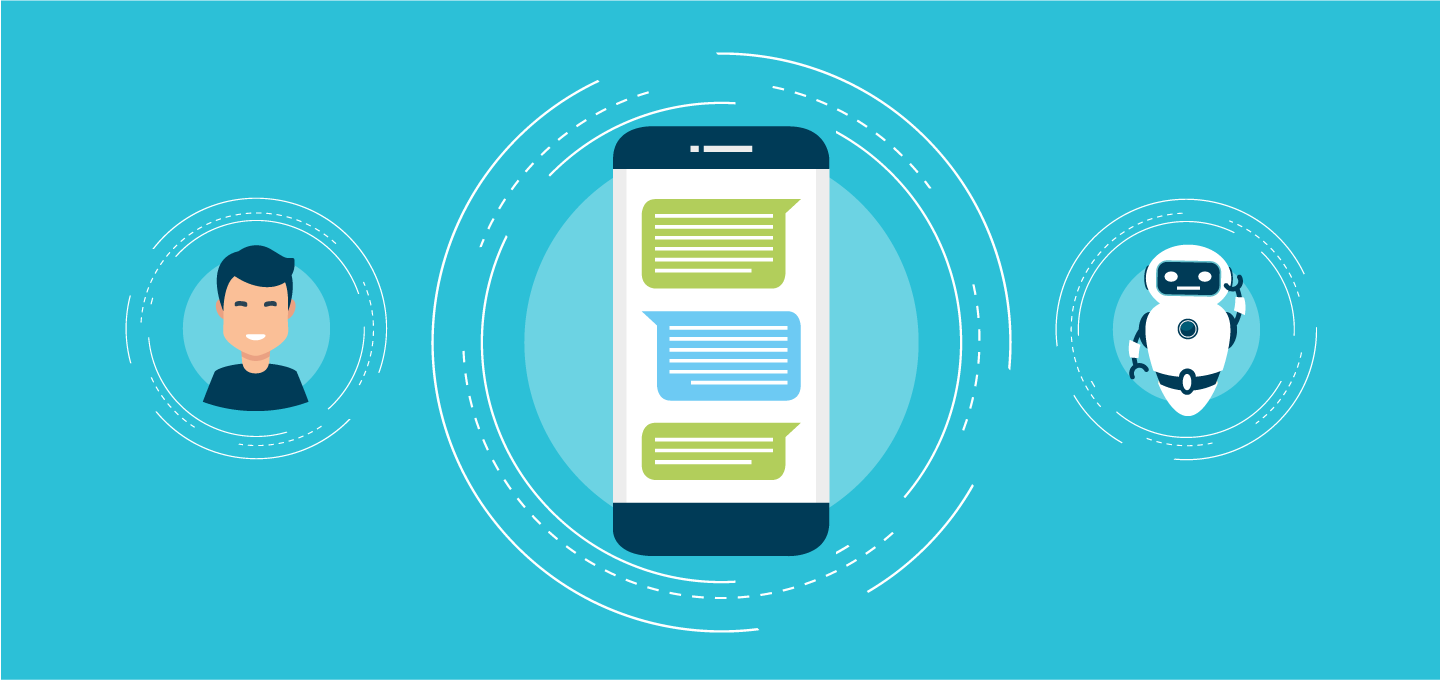Introduction: AI’s Emergence in Business
The world around us is undergoing an undeniable transformation, countless aspects of our everyday lives are being reshaped by an invisible revolution – the revolution of Artificial Intelligence (AI). This transformation isn’t confined to our personal lives, it is causing a seismic shift in the global business landscape as well. The driving factor behind this monumental shift is the introduction of AI-powered tools such as chatbots that are transforming the dynamics of business processes and boosting productivity to unprecedented levels, revolutionizing the cash flow in business.
The Age of Artificial Intelligence: An Overview
The rise of AI is one of the most defining developments of our time. We constantly interact with AI, often without realizing it, from the personal assistant on our smartphones to product recommendations we receive while shopping online. It’s intriguing how AI is weaving itself into the fabric of modern society and it doesn’t plan to stop anytime soon. Artificial intelligence is a power that is being harnessed by businesses to monetize their online presence and the phenomenon of chatbots is a testament to this fact.
How AI is Changing the Global Business Landscape
AI is not just a technological advancement; it represents a fundamental shift in the way businesses operate. AI-powered chatbots are helping businesses stay engaged with their customers, handling queries, and providing instant support, thereby providing a substantial boost to business productivity. They streamline operations by managing repetitive tasks, leaving the human workforce free to focus on strategic areas that require human expertise and intuition. This integration of AI in business processes has profound ramifications on the business’s cash flow by improving efficiency and saving costs, thereby creating a more productive and profitable business environment.
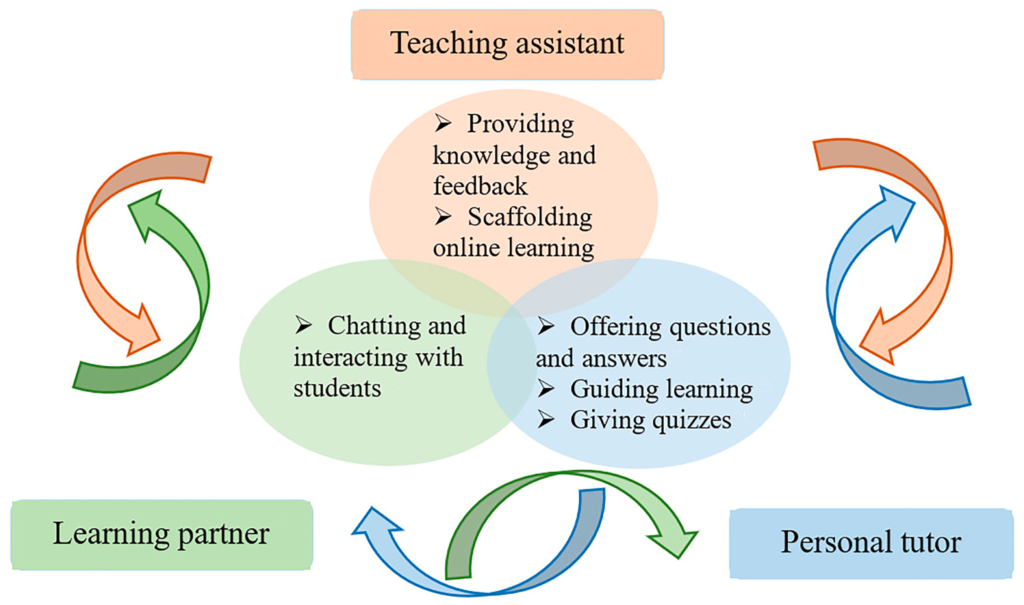
This image is property of www.mdpi.com.
Understanding Chatbots
Chatbots, also known as conversational agents, utilize artificial intelligence (AI) to simulate human conversation. In recent years, they have taken a front seat in driving business productivity and enhancing cash flow.
The Concept and Functionality of Chatbots
Chatbots are software applications that interact with users in a human-like manner. These interactions can happen through text, voice commands or both. They’re programmed to mimic human conversation and understand the intent behind user input. By using AI, natural language processing (NLP), and machine learning, chatbots are capable of not only understanding but also learning from conversations. They can thus offer appropriate responses, making the interaction feel like a conversation with a real person.
Businesses are finding value in the way chatbots streamline customer interactions. They can handle everything – from answering customer queries and booking appointments, to processing orders and payments. By doing so, they reduce the need for human involvement in routine tasks, which in turn, saves time and resources for the business.
Types of Chatbots and Their Role in Business
There are different types of chatbots, such as rules-based, self-learning, and hybrid chatbots. Rules-based chatbots are programmed to answer predefined inquiries. On the other hand, self-learning chatbots use machine learning to improve their knowledge over time. Hybrid chatbots combine rules and learning to offer a more sophisticated user experience.
Chatbots are now an integral part of business strategy. They play crucial roles in customer support, sales, and marketing by ensuring customer queries are resolved swiftly, potential leads are nurtured, and existing customers are engaged.
All in all, the AI-driven revolution of chatbots in enhancing business productivity is here to stay. As they evolve, they’re set to bring even more changes and opportunities, helping businesses optimize their operations and ultimately, boost their cash flow.
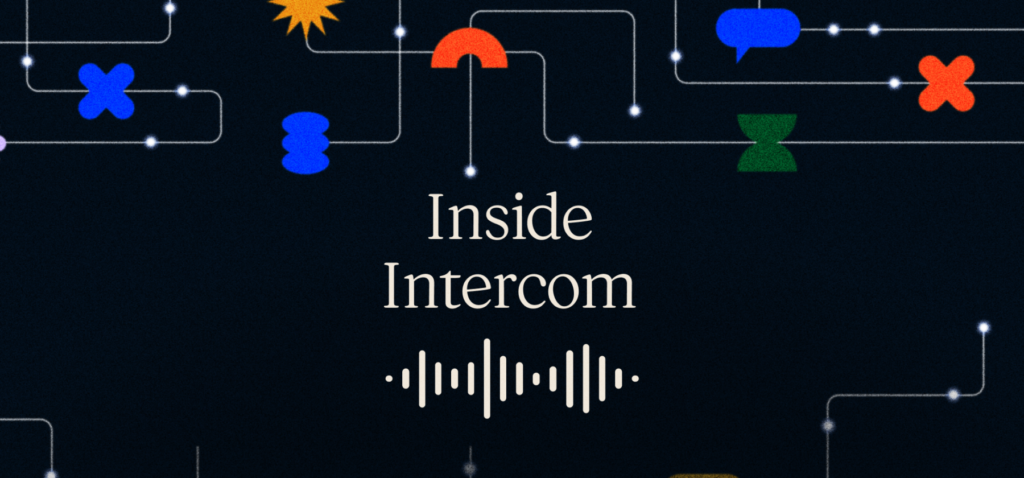
This image is property of blog.intercomassets.com.
Chatbots: Driving Business Productivity
For a long time, I’ve watched businesses grapple with the challenge of maximizing productivity and enhancing customer service. It’s a tightrope walk, I must say. But a revolution has quietly been underway, with the potential to resolve this conundrum—Chatbots. So, are chatbots truly capable of driving business productivity? Here’s what I’ve seen and learned.
How Chatbots Enhance Customer Service
My first encounter with a chatbot left a lasting impression on me. It was as if an actual human was responding to me from the other end. Yet it was a machine—an Artificial Intelligence with a purpose of helping me navigate through a product.
Today, companies are leveraging chatbots for 24/7 customer support. Why, you wonder? Well, it’s simple. Chatbots deliver a seamless user experience, answering inquiries effectively and immediately, ensuring customers don’t have to endure long waiting periods for responses. Plus, I’ve found chatbots to be highly efficient at handling frequently asked questions. This reallocation of mundane tasks allows human customer service reps to focus on more complex issues, thus enhancing overall productivity.
Interactions Reimagined: Chatbot’s role in Customer Engagement
Interestingly, I discovered, chatbots aren’t limited to customer service. I’ve seen them implemented to engage customers through interactive marketing campaigns, making interactions more entertaining and personalized.
Imagine being a customer who visits a website and instantly a chatbot pops up—asking you about your preferences, suggesting best options, offering relevant promotions—all based on your prior activities. Such personalized interactions can make or break a customer relationship and drive sales. Thus, pushing the cash flow in a positive direction.
In essence, chatbots are revolutionizing business productivity, enhancing customer service, fostering engagement, and driving sales. AI is indeed a game-changer!

This image is property of verloop.io.
Transforming Cash Flow Management with AI
As a business owner, managing cash flow is one of my biggest priorities. Understanding where money is coming from and where it’s going is critical to my company’s long-term success. But sometimes, it feels like I’m always scrambling to keep up. This is where AI comes in, particularly the use of chatbots.
The AI Effect on Business Finances
AI is revolutionizing many aspects of business, and finance is no exception. Chatbots, programmed to understand and respond to financial queries, can automate many tasks that once required hours of painstaking work. Even better, they can do so accurately and efficiently, shaving off time that can then be devoted to other priorities. My business has benefited greatly from this feature, as I no longer need to spend long hours manually entering data or sorting through financial reports. Instead, I rely on my trusted AI aide, always ready to assist with real-time financial management.
Overcoming Cash Flow Challenges with AI Solutions
Cash flow management is no longer the tedious, time-consuming task it used to be. With AI, I can quickly access all the financial data I need, analyze it, and make informed decisions faster than ever. This increased speed and efficiency have enabled me to identify potential cash flow problems before they become critical, allowing me to take preventative measures. AI, with its ability to handle complex calculations in a fraction of the time it would take a human, has become an indispensable tool in my business arsenal.
Chatbots are not just revolutionizing customer service; they’re transforming business productivity. By taking over mundane financial tasks, they’re allowing me to focus on what I do best – running and growing my business. In short, thanks to these AI-powered chatbots, managing my cash flow has never been easier.
Chatbots and Cash Flow: A Synergistic Relationship
Keeping track of cash flow has been always a core aspect of running a business. But gone are the days when cash flow management was a tedious, time-consuming task. Nowadays, AI-based tools, particularly chatbots, have revolutionized business productivity. Not only do they automate repetitive tasks and reduce costs, they can also enhance customer engagement.
How Chatbots Can Streamline Cash Flow Processes
Chatbots equipped with AI technology can massively improve cash flow processes in several ways. Firstly, they can automate the prediction and tracking of income and expenses, giving you instant access to vital financial information. And guess what? No more manual entry errors. Secondly, chatbots can effectively serve as virtual financial advisors, guiding businesses in managing their money more efficiently.
For instance, if a business is projected to face a cash shortage in the near future, the chatbot can alert the business owner in advance and even suggest suitable solutions, like securing a bridge loan. This precise forecasting ability enables businesses to take proactive measures, steering them away from potential financial pitfalls.
Real-life Examples of AI-Enabled Cash Flow Management
AI-powered chatbots are not just theoretical concepts – they already exist and are making inroads into corporate accounting. Companies like Botkeeper and Kuki chatbot are employing these AI-driven assistants to handle everything from bookkeeping to expense management. There’s even Pegg, a smart assistant developed by Sage, that can track business expenses, pay suppliers, and manage invoices, thereby maintaining a healthy cash flow.
So, as we delve deeper into this era of digital transformation, AI chatbots are proving to be an indispensable tool for businesses. Not only do they enable real-time and error-free cash management, they also optimize business operations, value creation, and, most importantly, profit maximization.
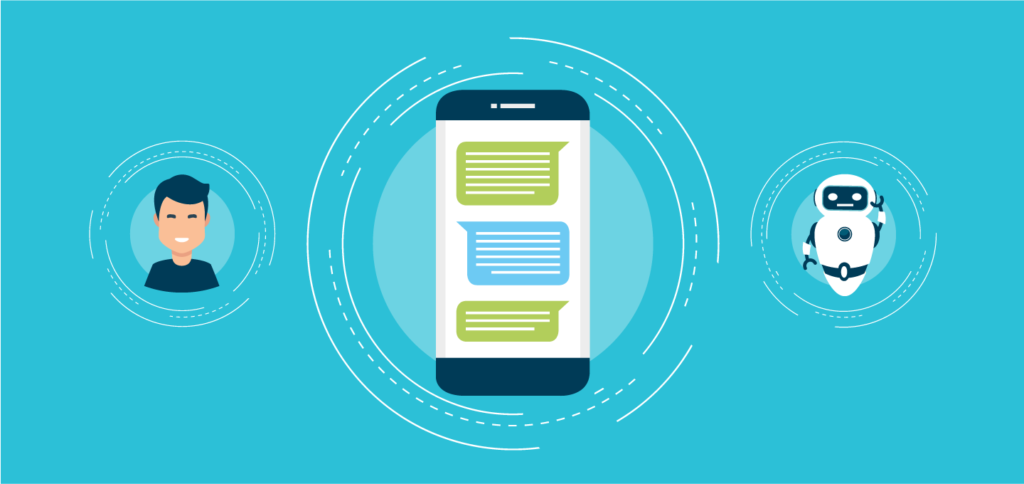
This image is property of miro.medium.com.
Monetizing AI in Business: The Profitable Impact
We live in an era where the business landscape is constantly changing and evolving. Companies across various sectors are continually looking for ways to maximize their efficiency and cost-effectiveness. AI, specifically in the form of chatbots, has emerged as a significant tool that businesses leverage to improve their productivity and enhance their cash flow.
Business Revenue Boost with AI Features
AI technology, for instance, chatbots, can significantly bolster a business’s ability to generate revenue. It achieves this by providing consumers with a more personalized and convenient shopping experience. Unlike human employees, chatbots can work round the clock and simultaneously handle multiple customer interactions without getting overwhelmed. This capability can lead to optimized customer experience, which in turn can boost customer loyalty, conversion rates, and consequently revenue.
Moreover, chatbots can aid in the efficient collection of customer data. This comprehensive data can be analyzed to facilitate better business decisions, create more targeted marketing strategies, and improve product offerings, ultimately leading to a surge in business income.
Achieving High ROI through AI Adoption
Adopting AI can enable a business to reduce its operational costs. As I previously mentioned, chatbots can carry out tasks more efficiently, make fewer errors, and work tirelessly. This leads to a reduction in human labor costs and lesser room for costly mistakes. Furthermore, AI can automate tedious, time-consuming tasks, freeing up human employees to concentrate on more strategic tasks that can enhance business profitability.
In essence, chatbots and AI technology, in general, can significantly revolutionize a business’s productivity and profitability if leveraged correctly. By boosting customer engagement and reducing operational costs, AI can catalyze a healthy cash flow, making it a worthwhile investment in the long run.
The Challenges of Implementing Chatbots and AI in Business
As someone who’s passionate about emerging tech, I couldn’t help but notice the increasing importance of artificial intelligence (AI) in modern business strategy and how it’s driving productivity to another level. But with every revolution, there come significant challenges – and implementing chatbots and AI in business is no exception.
Potential Limitations of AI in Business
Now, don’t get me wrong. I am not pessimistic about AI in business, quite the contrary. I am just realistic. AI has huge potential, but like everything else, it has its own limitations and setbacks. One of the biggest challenges businesses face is the unpredictability of AI behavior. Despite rigorous testing, AI can behave unexpectedly when interfacing with human users. It can sometimes lead to misunderstandings or even business blunders. Another equally significant limitation is the steep learning curve required for AI implementation. Not all businesses have the necessary expertise to oversee AI applications, which can lead to ineffective use and waste of resources.
Overcoming Hurdles in AI Adoption
While these challenges may seem daunting, they are far from insurmountable. For instance, rigorous testing and fine-tuning are the keys to mitigating the unpredictability of AI behavior. In other words, the more you test, the better it gets. So be patient and persistent, it pays off. As for the technical expertise required, outsourcing is a solid option. Many firms offer AI implementation services at reasonable prices. You can even use training programs to build in-house expertise.
The AI revolution, as you can see, doesn’t come easy but it’s definitely worth the effort. With strategic planning, persistence, patience, and outside help when needed, businesses can successfully implement chatbots and AI, boosting productivity and revolutionizing their operations. Let’s gear up and embrace what the future has to offer!
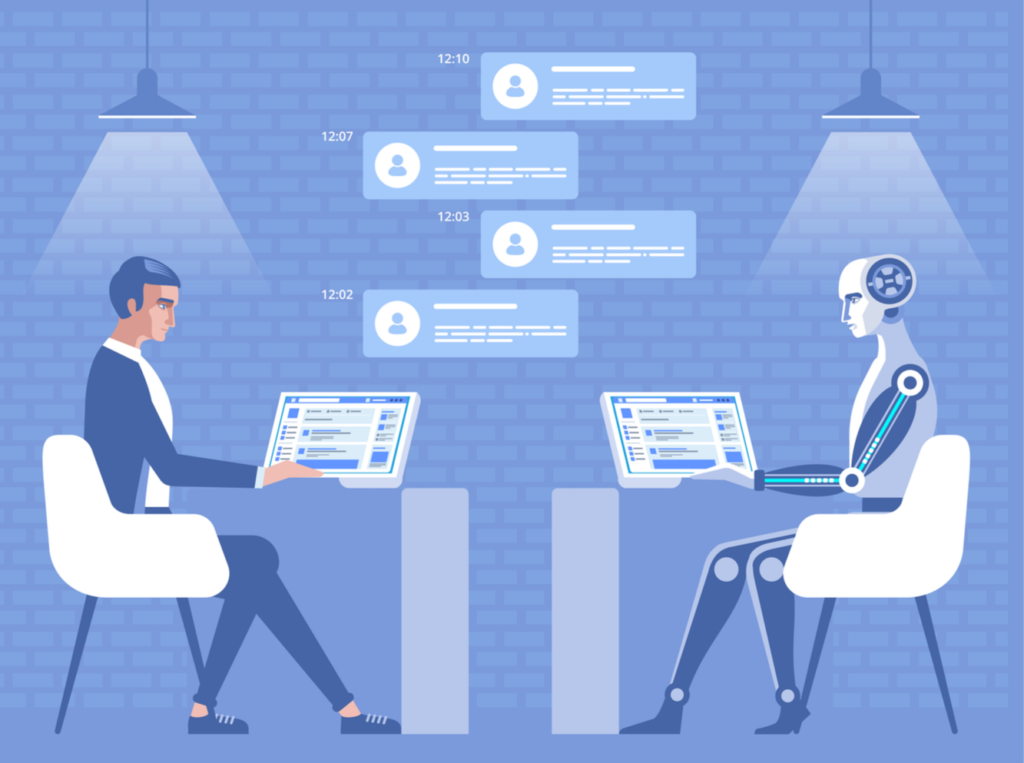
This image is property of miro.medium.com.
Future Trends of AI and Chatbots in Business
As AI and chatbots continue to develop, I am completely in awe at their potential to reshape, reimagine, and revolutionize business productivity. The power of these technological wonders lies not only in the efficiency and automation they bring, but also their capacity to facilitate communication, understand intricate data patterns, and profoundly effect the cash flow.
What’s Next for AI: Potential Industry Alterations
With the expansive growth of AI, it’s hard to ignore the transformations it could enact across various industries. For me, the most remarkable aspect of this is how AI can analyze and interpret vast amounts of business data for insightful decision-making, thereby influencing the rate of cash flow. Artificial Intelligence could potentially neutralize human error, optimize business efficiency and eventually transform several business operations.
The AI impact extends even to the least suspected areas such as marketing and customer service, already experiencing a seismic shift due to personalized suggestions optimizing customer satisfaction and returns.
Predicted Advances in Chatbot and AI Technology
Chatbots, too, have marked themselves as important players in the future marketplace. They’ve slowly and steadily integrated into our communication channels, bringing unprecedented speed and efficiency. There is certainly more advancement on the horizon. It’s thrilling to conjecture about the leaps in natural language processing and machine learning that may render future bots more sophisticated and human-like.
These streamlined interfaces could facilitate businesses to provide superior customer care by understanding and reacting to consumer needs promptly. This not only ensures customer satisfaction but also positively impacts cash flow.
In essence, AI and chatbots’ future in business lies in their potential to enhance business productivity remarkably, stimulate cash flow and curate a more personal customer experience. Their integration not only heralds an exciting era of technological advancements but paves the ground for transformative changes in global business landscapes.
Choosing the Right AI and Chatbot Solutions for Your Business
Welcome to our discussion on how to choose ideal AI and chatbot solutions for your business. The advent of artificial intelligence in the business realm has revolutionized productivity and cash flow, making it possible for businesses to scale at unimaginable rates. Chatbots, serving as key elements of AI implementation, can mean the difference between a business that thrives and one that stagnates. However, this magical transformation doesn’t happen in a vacuum—it starts with finding the right solution for your business.
Finding the Perfect Fit: A Step-by-Step Guide
The first step in choosing an AI solution is understanding your business needs. You need to identify the specific areas where your business could benefit from an AI intervention. Are you looking to improve customer service, lower operational costs, or perhaps ameliorate sales? Once you’ve identified your needs, the next step involves researching various AI and chatbot solutions. Look for solutions that align with your predefined needs, have a proven track record, and can integrate seamlessly with your existing systems.
Remember, it’s not about finding the most advanced AI technology; it’s about finding the right fit for your business—the solution that bridges the gap between your existing operations and your desired goals.
Assessing and Comparing Various Chatbot and AI Products
While assessing AI solutions, immerse yourself in reading reviews, studying case studies, and even reaching out to businesses using the AI products. Is their experience one you’d like your business to emulate?
On the other hand, comparing different AI products can be daunting. Therefore, create a list of your basic requirements, performance criteria, and budget. This way you can systematically compare features against your expectations and the costs involved.
Choosing the right AI and chatbot solution can drive your productivity, boost your sales, and fatten your bottom line. It’s a key step towards a thriving, future-proof business. The power of artificial intelligence is ready and waiting—it just needs your business to unlock it.
Integrating AI and Chatbots into Existing Business Systems
In our digital age, being able to adapt and integrate advanced technologies like artificial intelligence (AI) and chatbots into our existing business structures is instrumental to stay competitive. AI revolution in business productivity is a trending topic as more and more companies are exploring how these technologies can enhance productivity, streamline operations, and lead to better cash flow.
Blending Automation and Human Interaction: The Balanced Approach
AI and chatbots bring the power of automation to business. They can perform a wide range of tasks, from customer support to data analysis, without the need for human intervention. However, the key to using AI and chatbots effectively is striking a balance between automation and human interaction. You don’t want to replace your human workforce entirely. These technologies should act as a support to your team, automating repetitive tasks so that your staff can focus on more complex and creative aspects of their roles. This blend of human skills and AI capabilities can lead to improved productivity, efficiency, and ultimately, favorable cash flow.
Tips for Successful AI and Chatbot Integration
Perhaps the most critical aspect of integrating AI and chatbots is developing a comprehensive strategy. Understand what tasks these technologies can perform and how they can benefit your specific business needs. It’s also essential to consider the compatibility of these technologies with your existing systems. Another crucial factor to consider is staff training. You may have the most advanced AI, but if your team doesn’t know how to use it properly, your business won’t reap the benefits. Making these factors a part of your strategy can help you optimize the integration process.
By understanding and applying these practices, businesses can fully utilize the potential of AI and chatbots in streamlining their operations and sparking a significant increase in productivity and cash flow.
ROI and Impact Measurement for AI and Chatbot Implementation
As a business owner, evaluating the return on investment (ROI) is vital in every step of business growth. When incorporating AI and chatbots into existing business operations, we need to clearly measure their ROI and impact.
Monitoring and Evaluating AI and Chatbot Performance
AI and chatbots have infiltrated almost every part of daily business routine, from customer support to processing transactions. However, implementing AI and chatbots is not just about deploying them and letting them take over. Being integral parts of our operation, we need to constantly keep an eye on their performance. We can monitor key performance indicators (KPIs) such as customer satisfaction rate, transaction success rate, and time saved. Evaluating these metrics regularly not only helps us understand the efficiency of these intelligent machines but also enables us to make adjustments to improve chatbot performance and user satisfaction.
Long-Term Impact of AI and Chatbots on Business Productivity
In the short term, AI and chatbots can decidedly save time and workforce. In the long turn, our optimized chatbots can potentially increase revenue through upsells and cross-sells. By analyzing purchasing patterns and customer inquiries, AI and chatbots can provide personalized product recommendations. Customers are more likely to make additional purchases if the suggestions are based on their preferences and past records.
However, not everything about AI and chatbot implementation is smooth sailing. It’s also essential to address potential challenges, such as technical issues or resistance from employees. This is the reason we need strategies in place to manage these concerns.
By viewing AI and chatbot implementation from a holistic lens, we can ensure that our strategies align with our business targets, improving productivity and impacting our bottom line. It undeniably becomes an integral part of the AI revolution in business productivity.
Conclusion: The Inevitable AI Revolution
After exploring the various facets of how AI, especially chatbots, are revolutionizing business productivity, it’s clear that this technology is here to stay and will continue to disrupt the business landscape. The potential for increased efficiency and profitability is immense.
Embracing the New Normal: AI and Chatbots in Business
The integration of AI and chatbots into everyday business operations is becoming the new normal. The impact they have on cash flow is undeniable. These technologies streamline operations and enable businesses to save on labor costs while still providing excellent customer service. As I’ve mentioned earlier, chatbots can handle multiple customer requests concurrently and eliminate the need for customers to wait in long queues. When chatbots handle mundane tasks, human employees can concentrate on more critical and complex issues that require human intervention.
Preparing for an AI-Driven Future
To prepare for this AI-driven future, businesses must not only implement AI technologies like chatbots but also invest in training their workforce to work alongside this technology. As we move towards this inevitable revolution, there is a growing need for a blend of both human intelligence and artificial intelligence in the workplace.
In summary, the rise of AI and chatbots serves as a testament to how technology can transform business operations and increase productivity. It might seem daunting at first, but the rewards of improved efficiency, cost savings, and enhanced customer service make it a worthwhile investment. The AI revolution is here, and it’s time for businesses to embrace it and prepare for the future.
